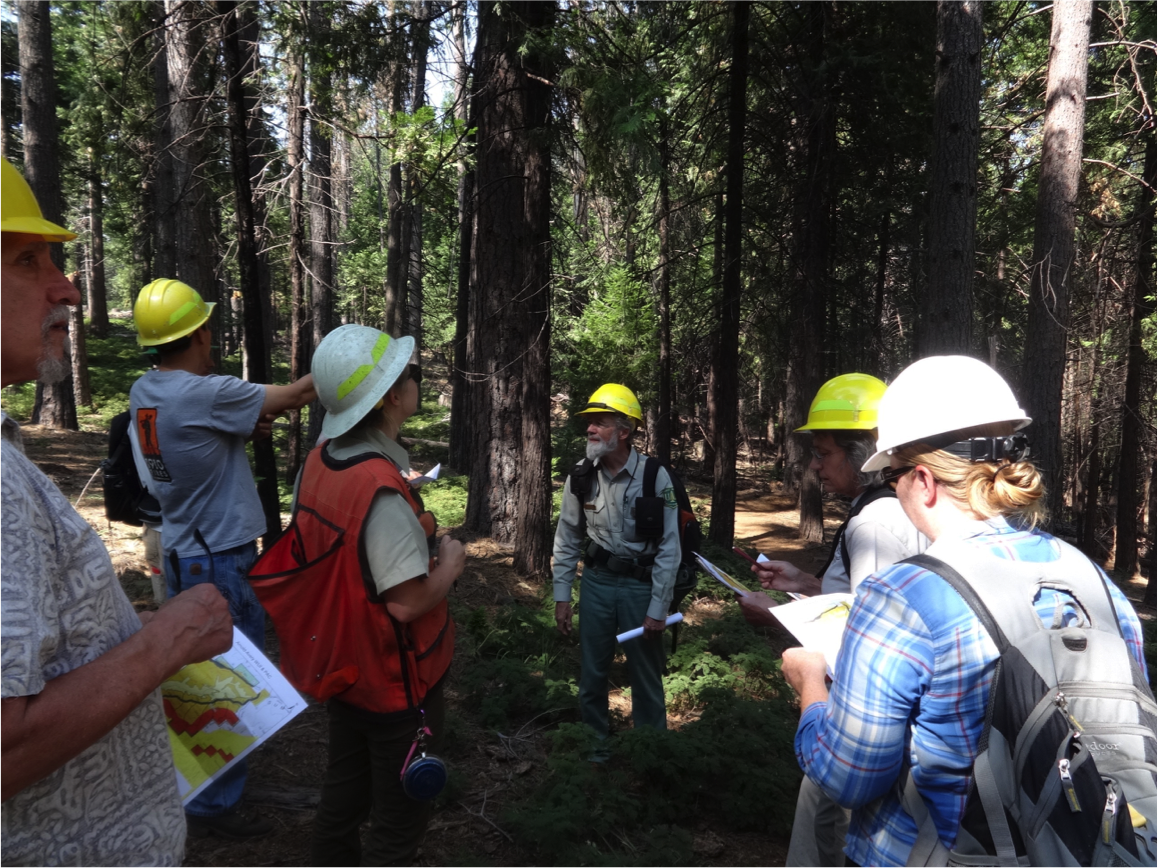The intense, catastrophic wildfires that have been consuming forest habitat and homes with increasing frequency throughout California highlight the need for fuels reduction projects. Communities like Arnold and Avery, which lie along the Wildland-Urban Interface (WUI), can be especially at risk of wildfire. Treating fuels in these areas can still elicit concern, however, because the Arnold-Avery area contains habitat for the at-risk California Spotted Owl. The owls require dense canopy cover of tall and generally large trees - ones often desired by loggers.

The Forest Service has begun using an expedited planning process for forest projects known as a Categorical Exclusion designated by the 2014 Farm Bill. Categorical Exclusions (CEs) mean that the Forest Service can shortcut environmental planning prior to approving a project. However, this type of CE requires the project to be located in a WUI area and be developed collaboratively with a diverse stakeholder group like the Amador-Calaveras Consensus Group (ACCG).
When the Forest Service proposed the Arnold-Avery CE project to ACCG, environmental advocates, including our staff, voiced concern over logging planned in the owls’ Protected Activity Centers (PACs- owl nest stands and the surrounding 300 acres). The initial proposal included logging trees up to 30 inches in diameter, which the owls depend on for nesting and foraging habitat. While it is important to create a fire-resilient landscape, both for the community members and the California Spotted Owl, CSERC did not want the logging treatments to make the PACs uninhabitable for the owls.
In a series of meetings with ACCG and homeowners, the group began discussing what the diameter limit should be for trees cut in the owls’ Protected Activity Centers, considering the best available science, the regional guidelines, and the safety of firefighters. While CSERC hoped to find a compromise that everyone was comfortable with, we could see, from our own forest visit, that in most cases cutting trees no larger than 18 inches diameter would effectively remove ladder fuels within the PAC, while still creating a fire-resilient and defensible landscape.
Along with the Forest Service and homeowners, ACCG members visited a PAC in the WUI and came to consensus that the PAC areas had very few trees in the 20 - 30 inch diameter range. The group agreed that trees 16 inches and smaller could be cut to remove ladder fuels, with rare exceptions up to 24 inches when the larger trees clearly present a fire hazard. Together we resolved this highly controversial issue while engaging in the Forest Service’s expedited environmental review process, thus meeting the timeline needs of the community.

